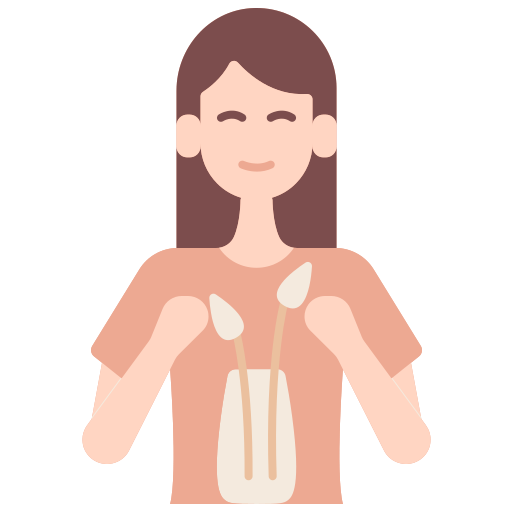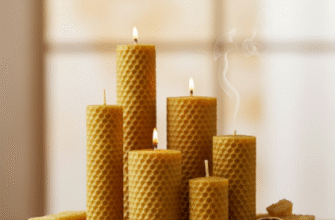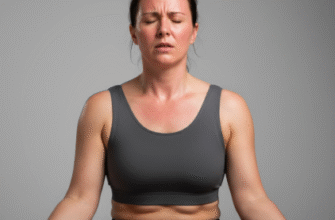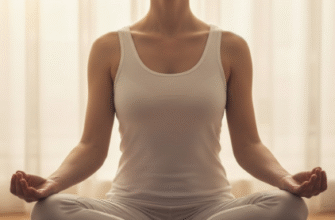It’s always there, humming along in the background of our lives – the gentle rhythm of our breath. Most of the time, we barely notice it. It’s automatic, a biological necessity. Yet, hidden within this constant, unassuming process lies a profound tool, one that ancient traditions like yoga and meditation have revered for millennia, and one that holds incredible relevance for us, right here, right now.
In our hyper-connected, often overwhelming modern world, finding moments of stillness and clarity can feel like searching for a hidden treasure. We juggle notifications, deadlines, social pressures, and an endless stream of information. Our minds race, our bodies tense up, and we often feel disconnected – from ourselves, from each other, and from the present moment. This is precisely where the simple, yet powerful act of paying attention to our breath steps in, acting as an anchor in the storm.
Breath as the Guiding Thread in Yoga Asana
Step onto a yoga mat, and one of the first things a teacher will likely guide you towards is your breath. It’s not just about getting oxygen to your muscles; in yoga, breath (often referred to using principles of pranayama, even within the physical practice or asana) is the vital link between mind and body. It’s the thread that weaves movement and awareness together into a cohesive, mindful experience.
Think about moving through a sequence of yoga postures. The instruction is often to inhale as you lift or open, and exhale as you fold or twist. This isn’t arbitrary. Matching breath with movement creates a flowing rhythm, a dance between effort and ease. The breath helps to initiate the movement, supports you through the transition, and guides you deeper into the posture. When you hold a challenging pose, like Warrior II or Triangle Pose, focusing on maintaining a steady, even breath can be transformative. Instead of tensing up and holding your breath (a common stress response), consciously breathing deep and slow sends a signal to your nervous system that you are safe, allowing you to find stability and calm even amidst the physical exertion.
One common technique used is Ujjayi Pranayama, sometimes called the “Ocean Breath” or “Victorious Breath.” This involves a slight constriction at the back of the throat, creating an audible, wave-like sound with both the inhale and exhale. This gentle sound provides an auditory focal point, helping to keep the mind present and engaged with the practice. More importantly, the controlled nature of Ujjayi breath helps to build internal heat, energize the body, and regulate the flow of energy, making the physical practice feel more integrated and purposeful.
Without conscious breath, yoga asana can become just a series of physical exercises, potentially even leading to strain or injury if not approached mindfully. With the breath as your guide, however, it becomes a moving meditation, a way to explore your physical sensations, your mental patterns, and the intricate connection between the two. Each inhale is an opportunity to create space, to lengthen, to expand. Each exhale is a chance to release, to soften, to ground.
Anchoring the Mind: Breath in Meditation Practices
If breath is the thread in the moving tapestry of asana, it becomes the central anchor in seated meditation (dhyana) and dedicated breathing exercises (pranayama). The primary challenge for anyone attempting to meditate is the notoriously wandering mind. Thoughts drift to the past, race towards the future, get caught up in commentary and judgment – anywhere but the present moment. This is where the breath serves as an indispensable tool.
The instruction is often deceptively simple: just observe your breath. Feel the sensation of the air entering your nostrils, cool and fresh. Notice the rise and fall of your abdomen or chest. Follow the entire arc of the inhale and the exhale, without trying to change or control it (unless practicing a specific pranayama technique). Why does this work? Because the breath is always happening now. It’s a constant, real-time physiological process. By gently resting your attention on these physical sensations, you tether your awareness to the present moment.
When thoughts inevitably arise – and they always do – the breath provides a neutral, non-judgmental point to return to. You notice you’ve drifted off into planning dinner or replaying a conversation, and then, gently, kindly, you redirect your focus back to the feeling of breathing. Each return is a small victory, strengthening the muscle of attention and cultivating mindful awareness.
Exploring Pranayama Techniques
Beyond simple breath awareness, specific pranayama techniques are designed to have particular effects on the mind and body. These are often practiced as a preparation for deeper meditation or as standalone practices.
Diaphragmatic Breathing (Belly Breathing): This foundational technique involves breathing deeply into the belly, allowing the diaphragm muscle to descend fully. This type of breathing encourages relaxation by stimulating the parasympathetic nervous system (the “rest and digest” response), countering the effects of shallow, chest-based breathing often associated with stress.
Nadi Shodhana (Alternate Nostril Breathing): This practice involves gently closing one nostril while inhaling through the other, then switching sides for the exhale, and continuing in a rhythmic pattern. Traditionally believed to balance the flow of energy (prana) in the body and harmonize the right and left hemispheres of the brain, many find it incredibly calming and centering, excellent for clearing mental fog.
Sama Vritti (Equal Breathing): This involves making the inhale and exhale equal in length, often counting silently (e.g., inhale for 4 counts, exhale for 4 counts). This rhythmic, balanced breathing can instill a sense of equilibrium and tranquility, steadying the mind and emotions.
Remember that consistency matters more than intensity when starting breathwork practices. Even five minutes of conscious breathing daily can yield noticeable benefits over time. Avoid forcing the breath or causing strain; the goal is gentle awareness and regulation, not struggle. Be patient and kind with yourself during the process.
These techniques, when practiced regularly, do more than just calm the mind in the moment. They train our attention, increase our awareness of subtle bodily sensations, and help us develop greater emotional regulation skills that spill over into everyday life.
Why Breath Awareness is Crucial *Now* More Than Ever
The principles of using breath for well-being aren’t new, but their application feels particularly vital in our current times. We live with unprecedented levels of stimulation and uncertainty. The constant barrage of news, social media updates, and work demands keeps our nervous systems in a perpetual state of low-grade alert (the sympathetic “fight or flight” response).
Conscious breathing offers a direct, physiological antidote. By intentionally slowing down and deepening the breath, especially emphasizing the exhale, we can manually shift our nervous system back towards the parasympathetic state. This isn’t just a mental trick; it’s biology. A calmer nervous system translates to reduced feelings of anxiety, less reactivity to stressors, improved sleep quality, and clearer thinking.
In an age of distraction, where our attention is constantly fragmented, the simple act of focusing on the breath for even a few minutes is a radical act of reclaiming our focus. It trains the mind to stay present, enhancing our ability to concentrate on tasks, engage more fully in conversations, and appreciate the simple moments of life that we might otherwise miss.
Furthermore, becoming aware of our breath patterns can give us profound insights into our emotional state. We might notice we hold our breath when tense, sigh frequently when sad, or take shallow, rapid breaths when anxious. Recognizing these patterns is the first step towards consciously using the breath to soothe and regulate those emotions, rather than being swept away by them.
Integrating Conscious Breathing into Daily Life
The beauty of breathwork is its accessibility. You don’t need special equipment, a quiet room, or even a lot of time. You can practice conscious breathing anywhere, anytime.
- Micro-Moments:** Take three slow, deep breaths before answering the phone, sending an important email, or entering a stressful meeting.
- Transitions:** Use the moments between tasks – waiting for the kettle to boil, sitting at a red light (eyes open!), walking from one room to another – to check in with your breath.
- Mindful Pauses:** Set reminders throughout the day to simply pause and observe your breath for 60 seconds. Notice the quality of your breath without judgment.
- Stress Response:** When you feel overwhelmed or agitated, consciously lengthen your exhales. Try inhaling for a count of four and exhaling for a count of six or eight.
These small, consistent efforts weave mindfulness into the fabric of your day, making stress management and emotional regulation less of a dedicated task and more of an integrated way of being.
Beyond the Mechanics: The Whisper of Prana
In yogic philosophy, breath is intimately connected with prana, often translated as “life force energy.” While asana and meditation focus on the tangible aspects of breath – the movement of air, the muscular engagement, the calming effect on the nervous system – there’s a deeper layer acknowledged in these traditions. Pranayama isn’t just about breathing techniques; it’s about guiding and expanding this vital energy within us.
Ancient yogic texts describe prana as the subtle energy that animates all life. Controlling the breath (pranayama) is seen as a way to influence and purify this energy. This purification is believed to lead to greater physical vitality, mental clarity, and ultimately, spiritual awakening. While difficult to measure scientifically, the subjective experience of increased vitality and clarity through breathwork is widely reported by practitioners.
Viewing breath through this lens adds another dimension to the practice. It’s not just about managing stress or improving focus in the contemporary sense; it’s about connecting with a fundamental source of vitality and awareness that sustains us. It encourages a sense of reverence for this simple bodily function and its potential to influence our entire state of being.
The Enduring Power of Presence Through Breath
In the end, the role of breath in yoga and meditation, both historically and right now, boils down to presence. It’s the most reliable, portable, and readily available tool we have to anchor ourselves in the present moment – the only moment where life truly unfolds. By cultivating awareness of our breath, we learn to navigate the complexities of modern life with greater ease, resilience, and clarity.
Whether flowing through yoga postures, sitting in quiet meditation, or simply pausing amidst a busy day, tuning into the rhythm of your breath is an invitation back to yourself. It’s a reminder that even amidst chaos, there is a place of stillness within reach. It costs nothing, requires no external validation, and its benefits ripple outwards, touching every aspect of our well-being. Learning to consciously breathe is, perhaps, one of the most simple yet profoundly impactful skills we can cultivate for navigating the challenges and embracing the fullness of life today.








